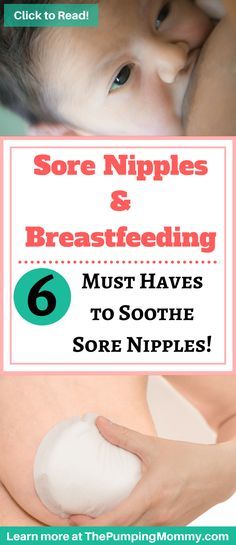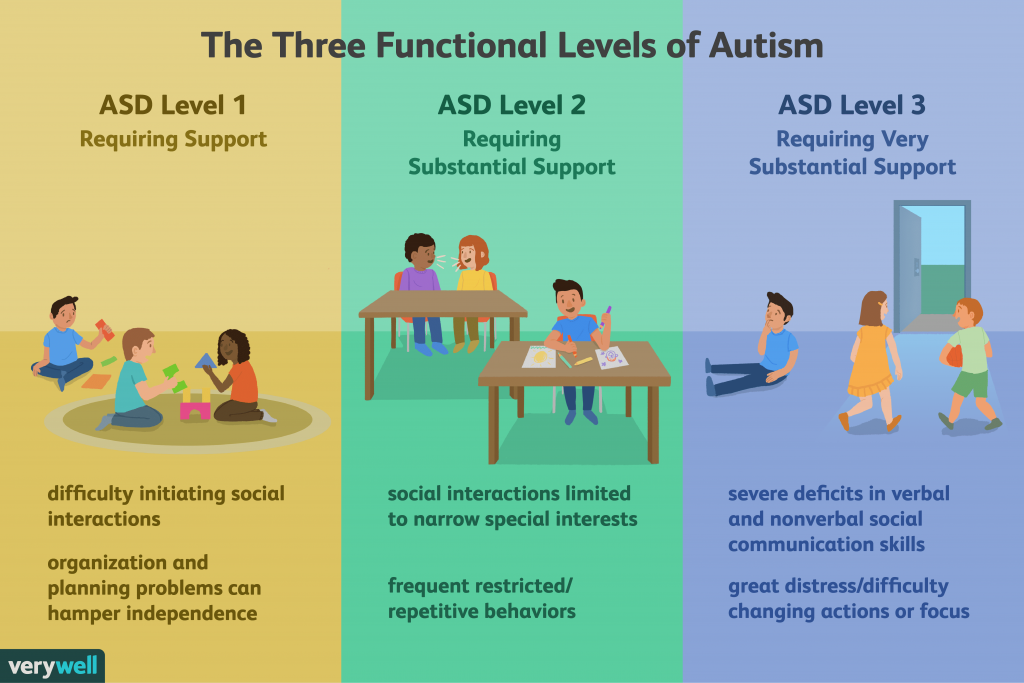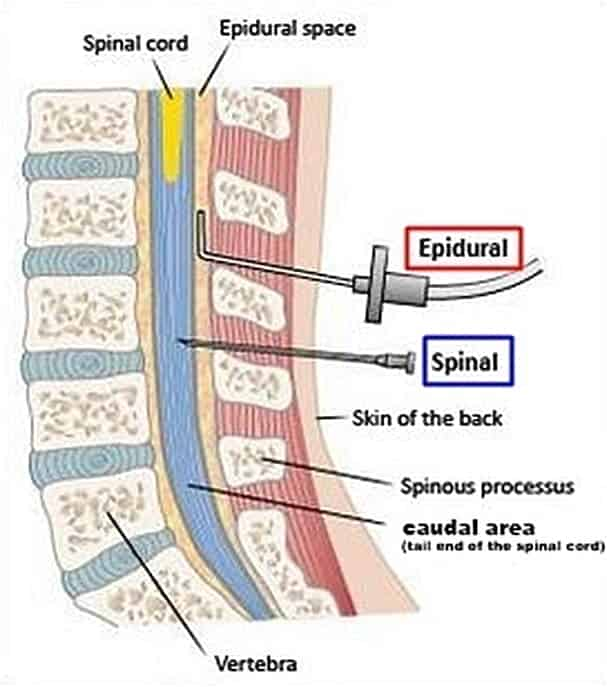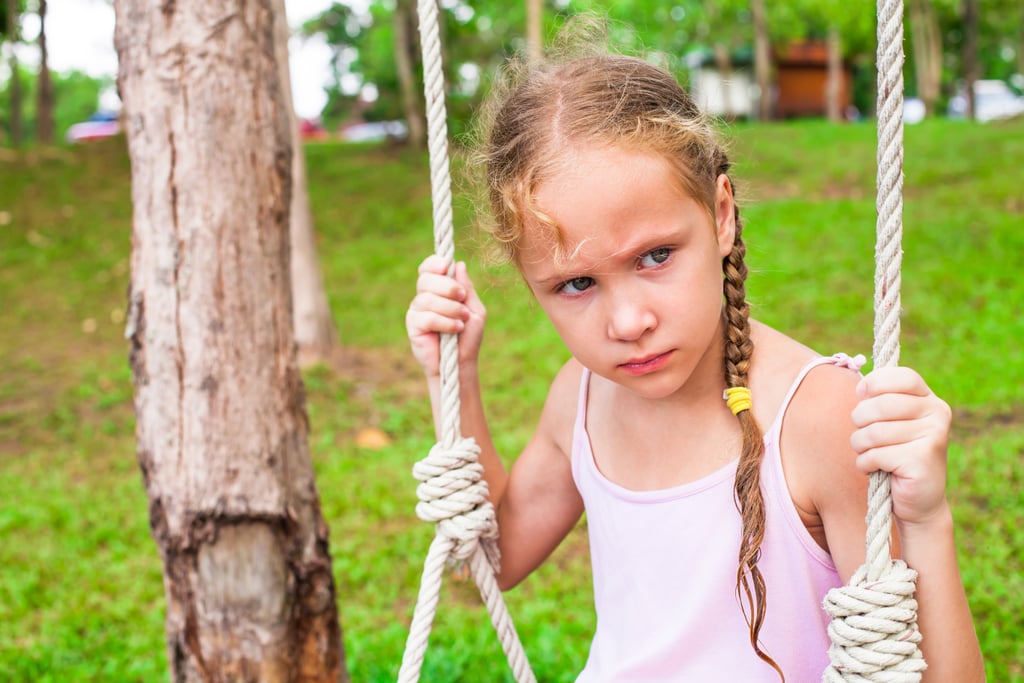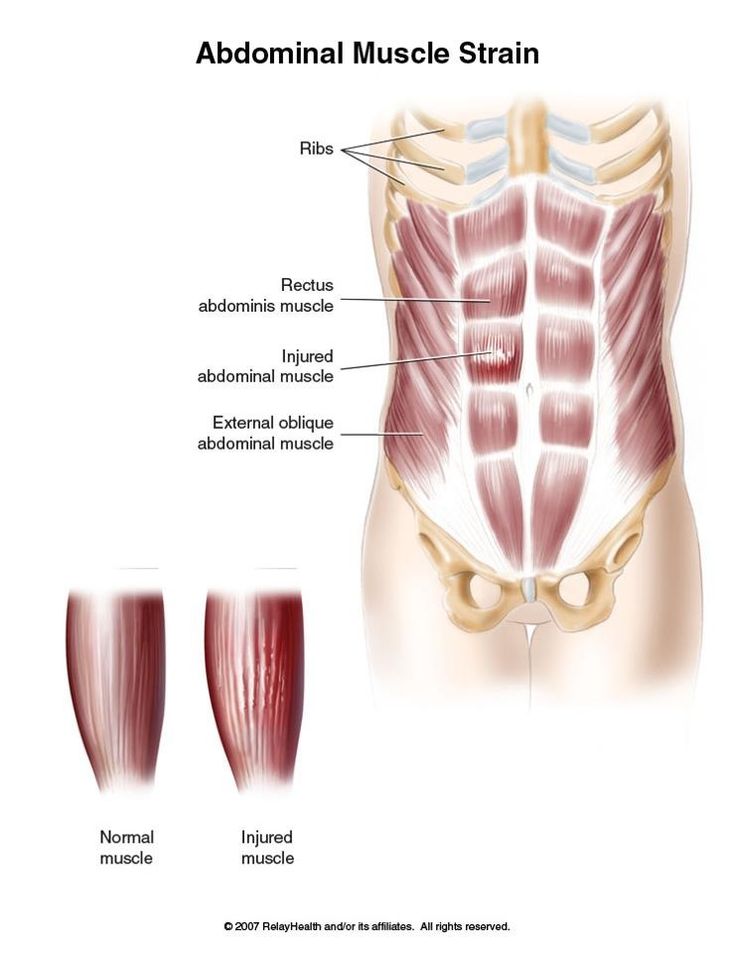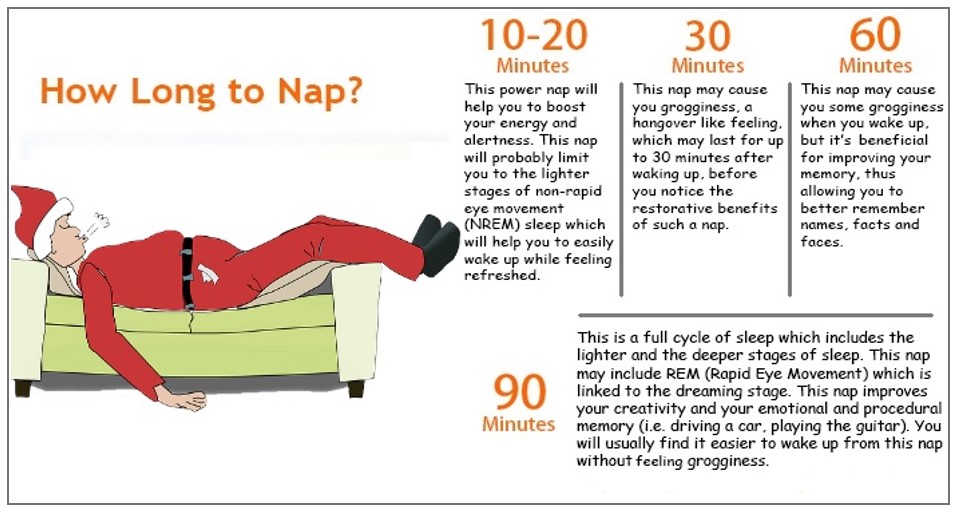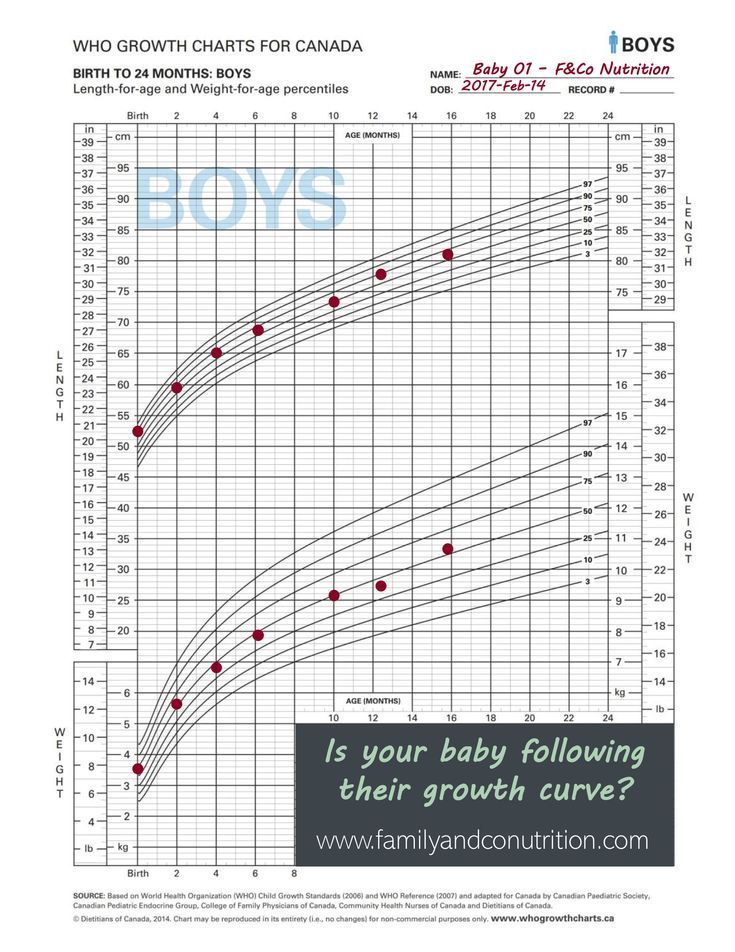Breastfeeding with sore cracked nipples
Sore or cracked nipples when breastfeeding
If you get sore nipples when breastfeeding, it's usually because your baby is not positioned and attached properly at the breast.
It's important not to stop breastfeeding. With help, feeding should quickly become more comfortable again.
Get help early for sore nipples
If you find 1 or both nipples hurt at every feed, or your nipples start to crack or bleed, it's important to get help from your midwife, health visitor or breastfeeding supporter as soon as you can.
They can watch as you feed your baby and help you get them correctly positioned and attached to the breast.
When your baby is effectively attached, your nipple rests comfortably against the soft palate at the back of their mouth.
If your baby is poorly attached to the breast, the nipple is nearer the front of their mouth and can be pinched against the hard palate, causing pain.
Flattened, wedged or white nipples at the end of a feed are a sign your baby may not be properly attached. Your baby may also seem unsettled after feeds.
Having sore nipples when you're trying to breastfeed a new baby can be stressful and upsetting.
Try to carry on breastfeeding or express milk by hand if you can, and ask for help early.
Learn more about expressing milk by hand
Self-help tips for sore nipples
Bear in mind that self-help tips will not be effective if your baby is poorly attached during breastfeeds.
But you may find it helps to:
- change breast pads at each feed (if you're using them) – if possible, use pads without a plastic backing
- wear a cotton bra so air can circulate
- keep feeding your baby for as long as they want – keeping breastfeeds short to "rest" your nipples will not ease nipple pain and could affect your milk supply
- avoid using nipple shields (a thin, protective cover worn over your nipple as you breastfeed) or breast shells (a hard, protective cover worn inside your bra) – these will not improve your baby's attachment to the breast
If your nipples start to crack, try dabbing a little expressed breast milk onto them after feeds.
Important
Get help early if your nipples are cracked or bleeding, as this increases your risk of getting an infection in your nipple.
If nipple pain does not improve
If your baby is properly positioned and attached at the breast during feeds and your nipples are still sore, ask your midwife, health visitor or breastfeeding supporter for help.
There may be an underlying problem, such as an infection like thrush.
Find out more about breastfeeding and thrush
Video: How do I know if my baby is properly latched?
In this video, a midwife talks about how to check if your baby is latched on properly when breast feeding.
Media last reviewed: 4 October 2022
Media review due: 4 October 2025
Page last reviewed: 8 November 2022
Next review due: 8 November 2025
Sore, cracked or bleeding nipples
Sore, cracked or bleeding nipples | Pregnancy Birth and Baby beginning of content4-minute read
Listen
Sore, cracked or bleeding nipples are common.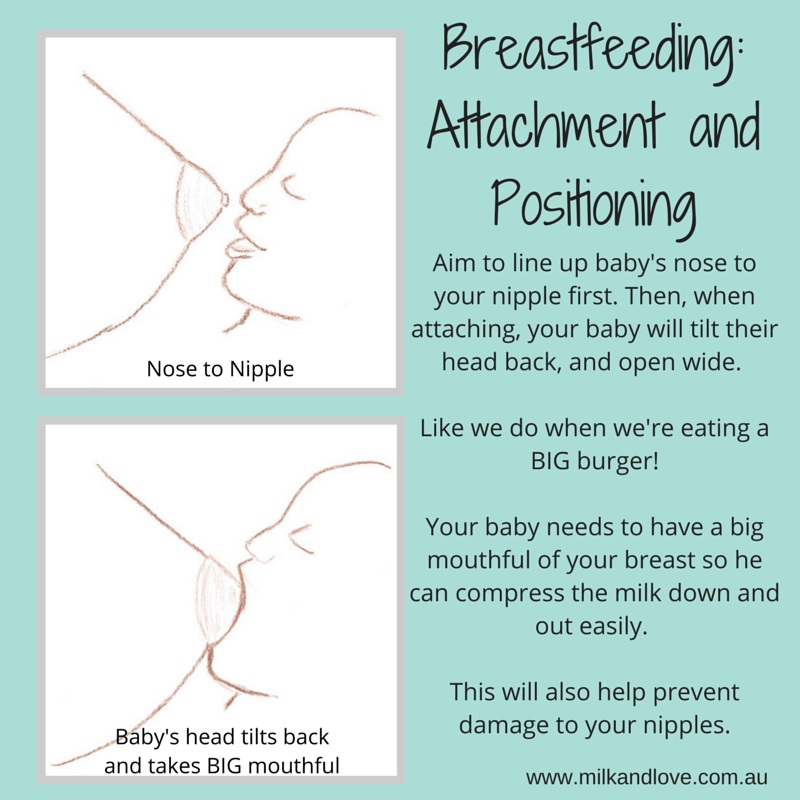 Some mothers have such trouble with them that they stop breastfeeding early.
Some mothers have such trouble with them that they stop breastfeeding early.
As a new mother, you may find it could take a few days or weeks to adapt to the strong suck of a healthy baby on your breasts.
It is normal for your breasts to become more sensitive in the first weeks after you have given birth. They may sting, burn, ache or feel tender. Over time, the discomfort and sensitivity should resolve.
If you have sore nipples, it may be that your baby isn’t attaching properly to your breast. This pain usually lasts about half a minute while baby first draws your nipple into their mouth.
Try to make sure your baby’s mouth is attached correctly for suckling from the very first breastfeed.
If you do not correct your baby’s latch, your nipples could be damaged, which causes problems like mastitis (infections).
How to get baby to attach to your breast correctly
- Make sure you are sitting or lying comfortably. Position your baby’s chest against your chest, with their mouth and nose facing your nipple.
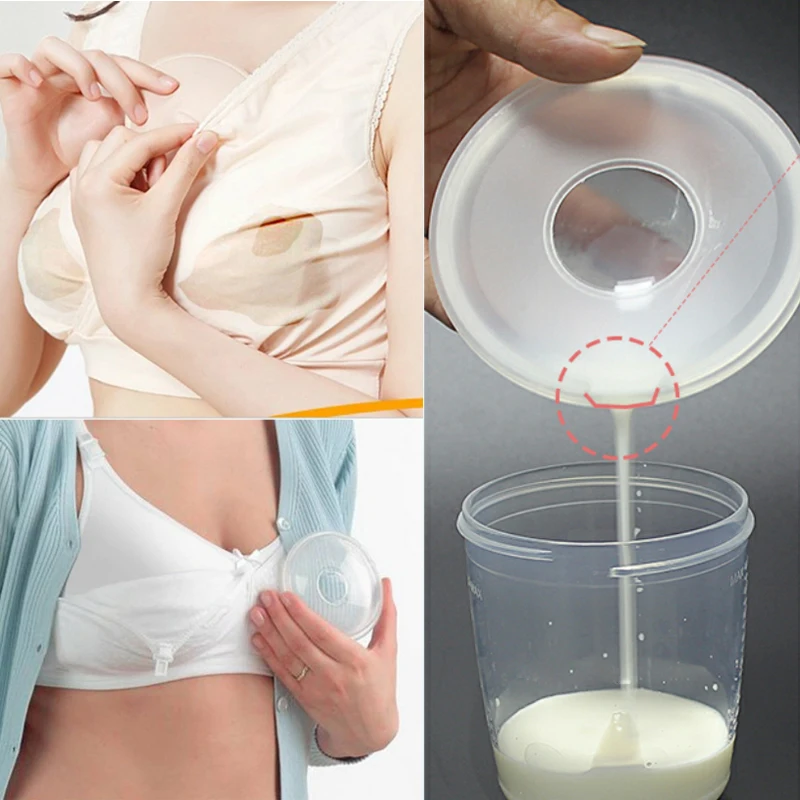
- If you are lying down, let your baby’s cheek rest against your breast. If you are sitting up, lift your breast slightly so it does not press on your baby’s chin.
- Position your baby so the first contact point is their chin on your areola — the coloured area around your nipple.
- Bring your baby’s head to your breast, not the breast to baby’s head. Support your baby to move to where they are trying to go — towards your nipple.
- Ensure the nipple and much (or all) of the areola and some surrounding breast are in your baby’s mouth.
After a few rapid gulps, your baby should start to suck and swallow in a regular rhythm. Once you have got the hang of it, breastfeeding can be enjoyable and should not be painful.
How to manage sore nipples
Before putting baby to the breast
Wash your hands and sit in a comfortable position and try to relax. Apply a warm washer to the breast and gently massage or express to help milk flow. Express some milk to soften the areola to lubricate the nipple.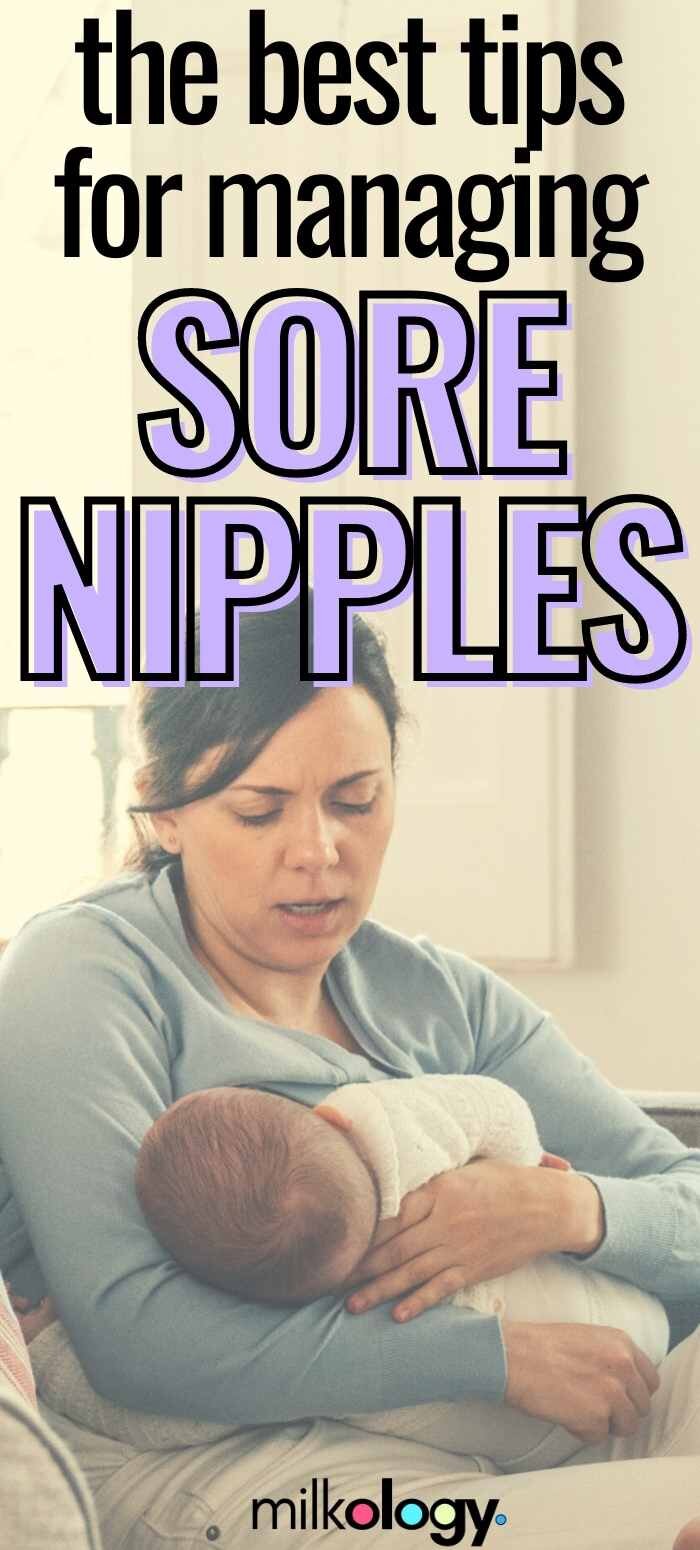
At the breast
Poor attachment is a key cause of sore nipples. Make sure the way your baby latches to your breast is correct. If you are not sure, ask for help from a health professional.
If the attachment feels uncomfortable after 30 seconds, break your baby’s suction by putting your finger in the corner of their mouth. Take your baby off and let them re-latch to your breast. Try different feeding positions. If your nipples are tender, limit your baby’s comfort sucking.
After the breastfeed
Check your nipples for redness and misshapen appearance. Wipe your breasts with clean water and let them dry. It can help to leave your bra off for a while and allow your nipples to air. Make sure your bra fits.
When expressing milk, make sure that the suction on your breast pump is not too strong. If the pain in your nipples increases after the first week, talk to a health professional.
Finding the cause of cracked or bleeding nipples
You will need to work out the source of your nipple problems. The first thing to do is to check if your baby is latching on correctly. You may need to ask a health professional for assistance. They can also check your baby for problems with their lips and tongue and whether you have medical problems like dermatitis or nipple infection. If you use a nipple shield, make sure it is the correct size and if you’re using a breast pump, make sure you’re doing it properly.
The first thing to do is to check if your baby is latching on correctly. You may need to ask a health professional for assistance. They can also check your baby for problems with their lips and tongue and whether you have medical problems like dermatitis or nipple infection. If you use a nipple shield, make sure it is the correct size and if you’re using a breast pump, make sure you’re doing it properly.
How to treat cracked or bleeding nipples
There are a number of things you can do to treat cracked or bleeding nipples.
- Look after your nipples: wash your nipples with water after every feed and clean and sterilise your nipple shield after each feed.
- If you can, continue breastfeeding (it is quite safe for baby to feed on a bleeding nipple). But if it’s too painful, you may need to take your baby off the breast for 24 to 48 hours, rest the nipple and feed your baby expressed breast milk. Gradually reintroduce the breast after resting for a short time and take special care with positioning and attachment.

- If you’re going to take pain-relieving medication, talk to your doctor or pharmacist. Many household remedies are ineffective or harmful.
The Australian Breastfeeding Association has more tips on treating sore or cracked nipples.
If you need further help or are experiencing prolonged abnormal breast pain, contact your doctor, lactation consultant, breast feeding counsellor, child health nurse or Pregnancy Birth and Baby on 1800 882 436.
Sources:
Australian Breastfeeding Association (Sore/cracked nipples), Australian Breastfeeding Association (Mastitis), Australian Breastfeeding Association (Attachment to the breast), Raising Children Network (Breastfeeding attachment techniques), Tresillian (Breastfeeding 0-3 months)Learn more here about the development and quality assurance of healthdirect content.
Last reviewed: December 2020
Back To Top
Related pages
- Expressing and storing breast milk
- Breastfeeding your baby
Need more information?
Breastfeeding – mastitis and other nipple and breast problems - Better Health Channel
Mastitis affects some breastfeeding women and may be caused by blocked milk ducts or a bacterial infection.
Read more on Better Health Channel website
Breastfeeding | Sydney Children's Hospitals Network
Breastfeeding is not always easy and you may have trouble breastfeeding your baby
Read more on Sydney Children's Hospitals Network website
Breastfeeding Advice For Newborn Babies | Tresillian
When establishing breastfeeding good positioning and attachment are key. Here are some tips from Tresillian to help your breastfeed your newborn.
Read more on Tresillian website
Breastfeeding - expressing breastmilk - Better Health Channel
Expressing breast milk by hand is a cheap and convenient method.
Read more on Better Health Channel website
Vasospasm and breastfeeding
Vasospasm affects the flow of milk from the nipple and can be a painful condition for women breastfeeding. Learn about vasospasm and how to relieve the pain.
Learn about vasospasm and how to relieve the pain.
Read more on Pregnancy, Birth & Baby website
Breastfeeding
Breastfeeding is learnt over the first weeks and months of your child’s life. It is a unique and special experience for families as no two mothers or babies are the same.
Read more on Karitane website
Breast milk expressing - MyDr.com.au
There are a number of reasons why a breast feeding mother might wish to express milk rather than feeding the baby directly from the breast.
Read more on myDr website
Breastfeeding challenges - Ngala
Many new mothers experience breastfeeding challenges
Read more on Ngala website
Breastfeeding your baby
Breastfeeding is the most natural way to feed your baby, providing all the nutrition your baby needs during the first six months of life and a loving bond with your baby.
Read more on Pregnancy, Birth & Baby website
Common breastfeeding issues | Health and wellbeing | Queensland Government
Learn about common problems and solutions to help you establish breastfeeding.
Read more on Queensland Health website
Disclaimer
Pregnancy, Birth and Baby is not responsible for the content and advertising on the external website you are now entering.
OKNeed further advice or guidance from our maternal child health nurses?
1800 882 436
Video call
- Contact us
- About us
- A-Z topics
- Symptom Checker
- Service Finder
- Linking to us
- Information partners
- Terms of use
- Privacy
Pregnancy, Birth and Baby is funded by the Australian Government and operated by Healthdirect Australia.
Pregnancy, Birth and Baby is provided on behalf of the Department of Health
Pregnancy, Birth and Baby’s information and advice are developed and managed within a rigorous clinical governance framework. This website is certified by the Health On The Net (HON) foundation, the standard for trustworthy health information.
This site is protected by reCAPTCHA and the Google Privacy Policy and Terms of Service apply.
This information is for your general information and use only and is not intended to be used as medical advice and should not be used to diagnose, treat, cure or prevent any medical condition, nor should it be used for therapeutic purposes.
The information is not a substitute for independent professional advice and should not be used as an alternative to professional health care. If you have a particular medical problem, please consult a healthcare professional.
Except as permitted under the Copyright Act 1968, this publication or any part of it may not be reproduced, altered, adapted, stored and/or distributed in any form or by any means without the prior written permission of Healthdirect Australia.
Support this browser is being discontinued for Pregnancy, Birth and Baby
Support for this browser is being discontinued for this site
- Internet Explorer 11 and lower
We currently support Microsoft Edge, Chrome, Firefox and Safari. For more information, please visit the links below:
- Chrome by Google
- Firefox by Mozilla
- Microsoft Edge
- Safari by Apple
You are welcome to continue browsing this site with this browser. Some features, tools or interaction may not work correctly.
Cracked nipples in nursing mothers, methods of their treatment and prevention
08.10.2020 Reading time: 5 min 84331
Content:
- Causes of cracked nipples
- Risk of cracked nipples
- How to feed a baby with cracked nipples
- Is it necessary to stop breastfeeding with fissures
- How to organize the process of breastfeeding with cracks
- How to treat cracked nipples
- Prevention of cracked nipples
Breastfeeding a baby is an exciting and joyful process, but, alas, it does not always go smoothly.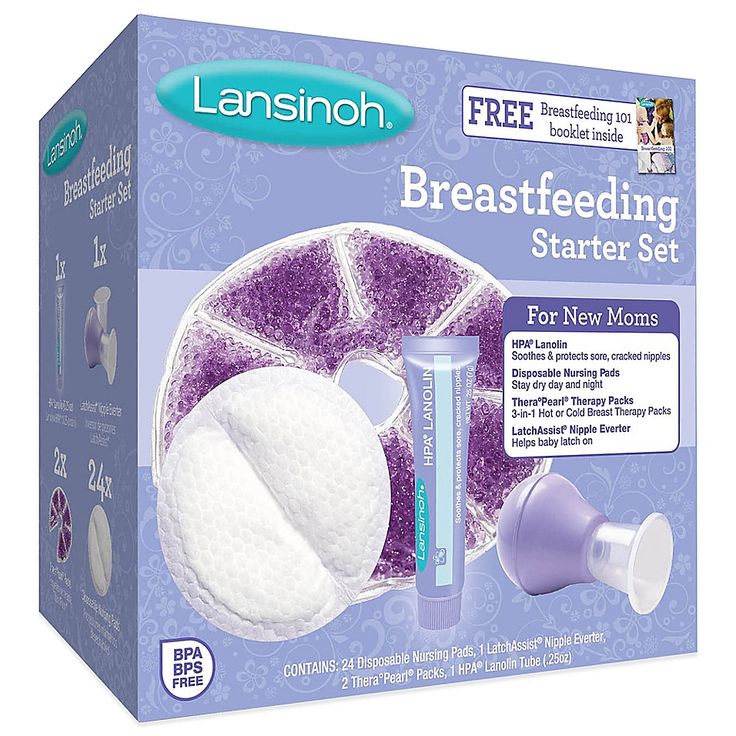 Approximately 10-15% of nursing mothers experience the problem of cracked nipples. They can occur from the first days of feeding, cause pain, discomfort, interfere. This problem requires a timely solution: you should not feed through force, it is better to take care of treatment in a timely manner. Neglecting the problem can make it worse.
Approximately 10-15% of nursing mothers experience the problem of cracked nipples. They can occur from the first days of feeding, cause pain, discomfort, interfere. This problem requires a timely solution: you should not feed through force, it is better to take care of treatment in a timely manner. Neglecting the problem can make it worse.
Causes of cracked nipples
Cracks are easy to identify: they look like small wounds, scratches or tears in the skin in the nipple area. Sometimes injuries to the skin of the breast occur for reasons unrelated to the behavior of the mother and baby, but breastfeeding errors are much more common. They are often allowed by primiparas, who do not have experience and sufficient baggage of information. Although WHO recommends that physicians provide adequate information to patients both before and immediately after delivery [1], mothers can still face challenges.
Incorrect nipple latch. Doctors say it's a common cause of damage.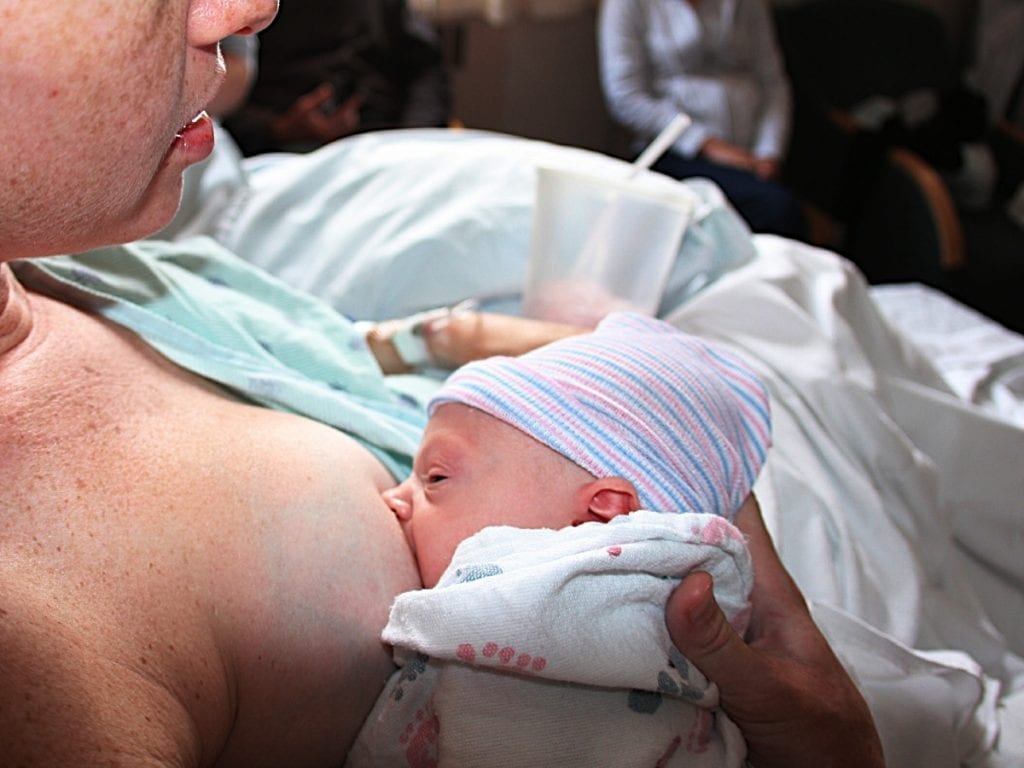 Until now, many people believe that the capture of the nipple by a child during feeding is simple, and are perplexed when faced with the need to learn. The fact is that it is difficult to properly capture the breast for a baby, although he has a sucking reflex almost immediately. If breastfeeding is incorrect, only the tip of the nipple will be in the mouth of the baby, which will roll freely in the mouth during feeding. In an attempt to fix the chest, the baby will try to grab it with his gums, inadvertently injuring. You can understand that this is a problem by several signs:
Until now, many people believe that the capture of the nipple by a child during feeding is simple, and are perplexed when faced with the need to learn. The fact is that it is difficult to properly capture the breast for a baby, although he has a sucking reflex almost immediately. If breastfeeding is incorrect, only the tip of the nipple will be in the mouth of the baby, which will roll freely in the mouth during feeding. In an attempt to fix the chest, the baby will try to grab it with his gums, inadvertently injuring. You can understand that this is a problem by several signs:
- the child causes pain to the mother while feeding;
- baby does not fully grasp the areola during suckling.
Incorrect grip leads to the fact that after 2-3 feedings, microtraumas will appear on the surface of the nipple, which can subsequently turn into deep cracks.
Incorrect pumping. This problem is usually encountered by mothers who pump irregularly, for example, only in situations when they need to go somewhere.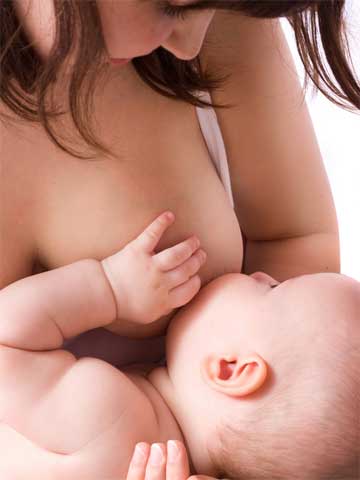 They lack experience to form a habit. If pumping is done manually, you do not need to press on the entire nipple: this is a common mistake that leads to microtrauma and damage.
They lack experience to form a habit. If pumping is done manually, you do not need to press on the entire nipple: this is a common mistake that leads to microtrauma and damage.
Interfering with feeding. It happens that the mother mistakenly believes that the child has already eaten, and tries to wean him from the breast. The baby continues to eat and reflexively begins to grab the nipple, which leads to his injuries. So that weaning does not cause discomfort to the mother and does not lead to the appearance of cracks, you need to do this only when the baby is sure to eat, fall asleep and release the breast on his own. If, for some reason, the mother urgently needs to stop feeding, you can gently insert a finger into the baby's mouth, and only then remove the breast.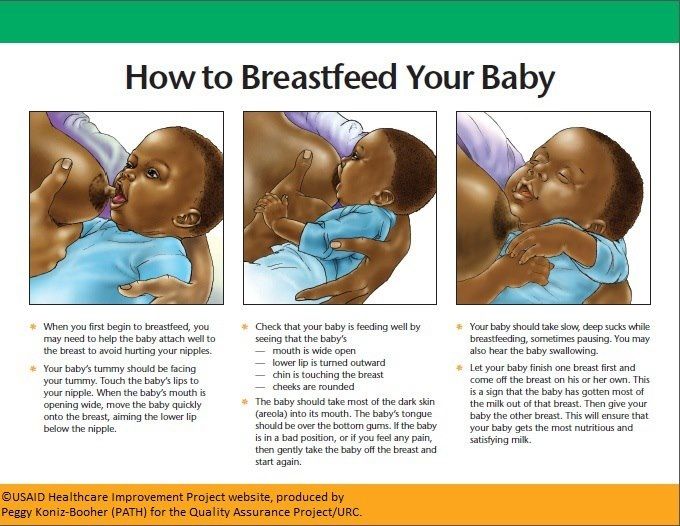 This will help avoid injury. Also, do not abuse pacifiers: a baby accustomed to them squeezes the chest more.
This will help avoid injury. Also, do not abuse pacifiers: a baby accustomed to them squeezes the chest more.
Improper care of the skin of the mammary glands. Neglect of hygiene or, conversely, an excess of drying care products can also cause cracks. Soap, cosmetics, which contain alcohol - all this dries the skin, and overdried skin is easier to injure. Some people think that it is necessary to wash the breast with soap before each feeding. This is not so: daily hygiene procedures are enough. Improper care may also include:
- wearing underwear that is too tight or hard in unsuitable fabrics, underwired bras;
- use of powders and other laundry detergents that may cause allergies.
Cracks can also occur due to leaking milk residues. They are recommended to be removed. If a baby develops thrush in his mouth, this can also harm the sensitive skin of the chest - you need to carefully monitor the condition of the baby.
Skin diseases. Cracked nipples are often associated with other diseases, both infectious and non-infectious. For example, allergies or thrush can increase the risk of injury. In addition, diseases can develop against the background of cracks: injured skin is more vulnerable to infections. If you find signs of any illness, contact your doctor immediately. The specialist will prescribe treatment and give advice on what to do with feeding further, depending on the situation.
Sensitive skin. There is a situation when the baby is properly applied to the breast, but the nipples still crack and hurt. This may be due to the individual characteristics of the skin. If the skin is thin and sensitive, the mother usually knows about this in advance, but for reliability, you can consult a doctor. In such situations, the cracks are usually small and quickly heal, and the sensitivity gradually decreases. The longer a woman breastfeeds, the less discomfort she causes, until eventually it disappears completely. However, if the pain does not go away, this is a reason to consult a specialist.
Vascular problems. After milk has been sucked out of the breast, a spasm may occur in it. Nipples at such moments become hard and tense, hurt and change color. It is important to remember that in the event of a spasm, the nipple becomes especially vulnerable, so the breast should be treated with care. Discomfort will soon pass: vasospasm does not last long. To alleviate the condition, you can put a damp, warm towel or heating pad on your chest.
Danger of cracked nipples
It may seem that microtrauma does not cause much harm to the mother, but this is not so. It is not worth neglecting them and feeding through force, ignoring pain. In fact, injured nipple skin is an open door for a variety of infections. If bacteria get into the crack, an inflammatory process may begin, which will subsequently pass to the entire mammary gland. Cracks can cause mastitis.
In addition, inflammation can lead to serious consequences: you will need to drink medicines and possibly stop breastfeeding. Therefore, if cracks appear on the nipples, you need to pay attention to this immediately, do not endure and do not think that pain is normal. Cracks are easier to manage when they are still shallow; the more severe the injury, the longer it will take to heal.
How to feed a baby with cracked nipples
By themselves, microtraumas are not a reason to stop breastfeeding, but sometimes the pain during feeding is so severe that the mother begins to think about it. In reality, this is not at all necessary: there are ways to continue breastfeeding your baby, even if cracks appear on the nipples. Breastfeeding is beneficial for both mother and baby. The baby receives all the substances he needs, the mother, in turn, releases the hormone oxytocin [2], which, among other things, contributes to the return to normal after childbirth.
Is it necessary to stop breastfeeding with fissures
No, this is completely optional if the cracks are not caused by an infection or have not become infected after they appeared. Of course, if the damage is deep, blood or ichor oozes from the injured nipple, you should not give it to the child. It is better to wait for complete healing. The same goes for inflammation, conditions in which the milk is contaminated or the baby can become infected through contact with the nipple. In such cases, you need to consult a doctor, consult with him about taking medication and the possibility of continuing to feed. You should not neglect a visit to the doctor, each case is individual and needs to be considered separately. If there is no infection or extensive damage, then there is no ban on feeding even if there are cracks. But there are ways to reduce the pain and reduce the risk of further injury to the breast.
Of course, if the damage is deep, blood or ichor oozes from the injured nipple, you should not give it to the child. It is better to wait for complete healing. The same goes for inflammation, conditions in which the milk is contaminated or the baby can become infected through contact with the nipple. In such cases, you need to consult a doctor, consult with him about taking medication and the possibility of continuing to feed. You should not neglect a visit to the doctor, each case is individual and needs to be considered separately. If there is no infection or extensive damage, then there is no ban on feeding even if there are cracks. But there are ways to reduce the pain and reduce the risk of further injury to the breast.
How to Organize Breastfeeding with Fissures
- Attach the baby correctly to the breast, correctly remove it from the baby's mouth after feeding and hold the baby during feeding. You can learn this with the help of informational materials or specialists: doctors or lactation consultants [3], who will teach you how to properly attach your baby to the breast.
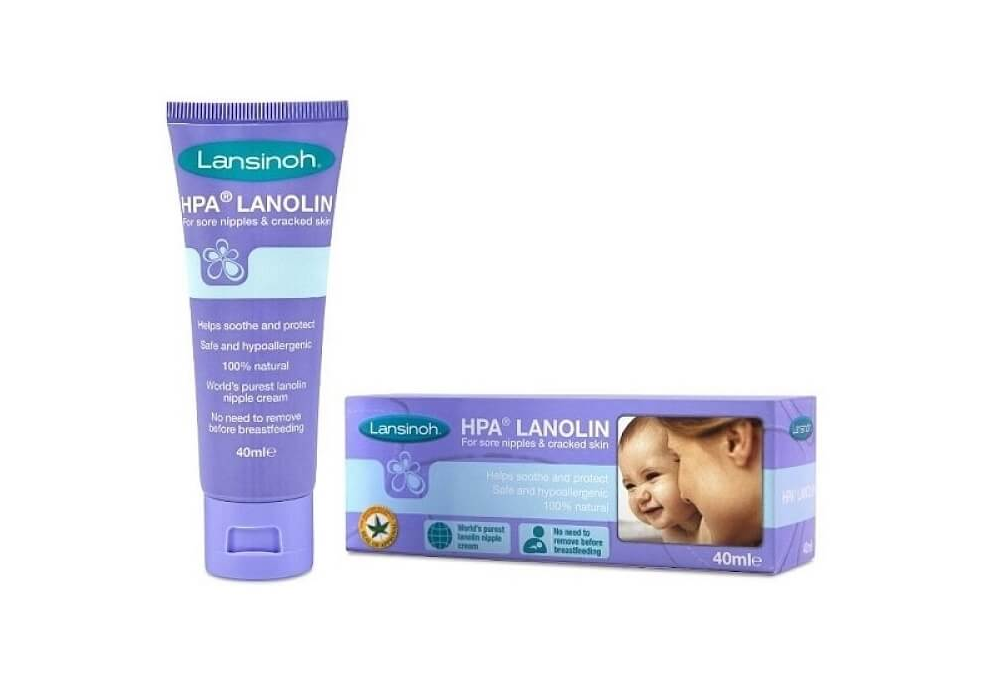 According to some reports, this can reduce the risk of cracks by 50%;
According to some reports, this can reduce the risk of cracks by 50%; - If only one breast is damaged, it is recommended not to feed it until the cracks have healed, and to use the second for the healing period.
- Special nipple covers for nursing can be used. They prevent the baby from squeezing the nipple and damaging the skin of the breast. There are also sanitary pads that are worn between feedings. Under them, you can apply a healing ointment.
- Feed the baby more often than usual. The more hungry the baby, the more intensively he sucks.
- It is recommended to start with a less damaged nipple: at the beginning of feeding, the baby sucks more actively.
- If the injury is severe, breastfeeding can be interrupted by expressing, then giving the baby the expressed milk. After wound healing, HB can be resumed.
How to treat cracked nipples
If the nipples are injured, treatment should be comprehensive.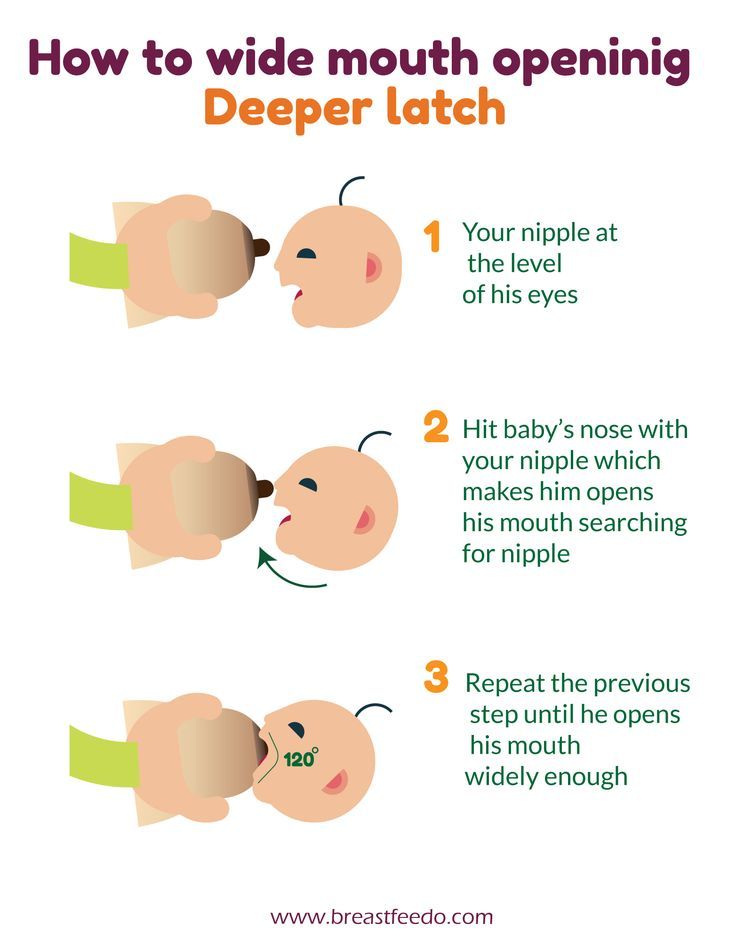 These are healing ointments and preparations containing vitamins: they are needed to strengthen and protect the skin. Overdried with soap or alcohol-containing products, the skin will need to be moisturized. The scheme in each case is individual and depends on the condition of the breast. You can consult with your doctor to better understand how to treat cracks in a particular case. Remember that drugs must be approved for use while breastfeeding.
These are healing ointments and preparations containing vitamins: they are needed to strengthen and protect the skin. Overdried with soap or alcohol-containing products, the skin will need to be moisturized. The scheme in each case is individual and depends on the condition of the breast. You can consult with your doctor to better understand how to treat cracks in a particular case. Remember that drugs must be approved for use while breastfeeding.
Basic preparations. There are several basic products that can help with cracks:
- ointments and creams based on dexpanthenol. This substance is used as a wound healing, at the same time it increases skin regeneration, moisturizes and strengthens. It is used for burns, wounds, ulcers. Well-known means - "Panthenol-D" or "Bepanten". Funds are sold in different forms;
- preparations containing zinc. Zinc has an anti-inflammatory and antibacterial effect, avoids the penetration of infection into wounds, but dries the skin;
- products with lanolin, which has a moisturizing effect.
 It is recommended to eliminate dry skin;
It is recommended to eliminate dry skin;
Folk remedies. If the cracks are still shallow, there is no inflammation or infection, you can use folk methods. They are also used for prevention. They should be used with caution: remember that some herbs may cause allergies or not be suitable in a particular case, and untested remedies can do harm. To avoid this risk, check in advance if the method is safe and use only those that will not cause harm. This is the milk itself, which, according to some reports, has a wound-healing effect. You can gently anoint the nipples with breast milk and be without underwear for a while.
Remember that this does not always work, and if the defeat is serious, this will not be enough. In the case of inflammation, extensive damage or infection, consult a doctor and use the drugs that he will prescribe.
Prevention of cracked nipples
It is much easier to prevent painful and interfering cracks than it is to treat them. To reduce the risk of them occurring, you can:
To reduce the risk of them occurring, you can:
- consult a doctor or use the services of a lactation consultant [3], who will teach you how to properly latch on. According to some reports, this can reduce the risk of cracks by 50%;
- start breast care in advance. Do not overdry it with soap or care products, and moisturizers, do not wear tight traumatic underwear;
- use hygienic liners and change them when wet, so that an excessively humid environment does not cause cracks;
- do not neglect hygiene, but also do not wash your breasts too often. A daily shower will suffice.
World medical organizations, in particular the WHO, agree that breast milk is the best food for an infant [1]. Moreover, breastfeeding can also be beneficial for the mother [2]. Therefore, you should not turn off the process when cracks occur, unless there are serious reasons for this. You can get rid of pain and injuries, and then feeding will not cause discomfort to either the baby or his mother.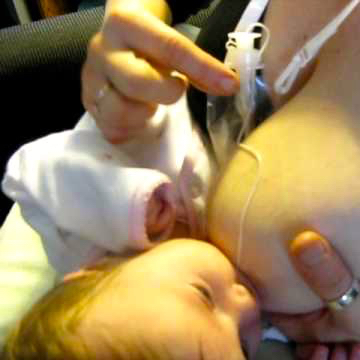
[1] WHO: Breastfeeding
[2] Carlos Gonzalez "The Gift of a Lifetime: A Guide to Breastfeeding"
[3] William and Martha Sears "Your Baby from Birth to 2 Years"
(0 ratings; article rating 0)
Cracked nipples | Medela
Amir, L.H. ABM Clinical Protocol #4: Mastitis, Revised March 2014. Breastfeed Med 9, 239–243 (2014). - Amir L.Kh., "AVM Clinical Protocol #4: Mastitis", revised March 2014 Brestfeed Med 9 (Breastfeeding Medicine) 239–243 (2014).
Jacobs, A. et al. S3-Guidelines for the Treatment of Inflammatory Breast Disease during the Lactation Period: AWMF Guidelines, Registry No. 015/071 (short version) AWMF Leitlinien-Register Nr. 015/071 (Kurzfassung). Geburtshilfe Frauenheilkd . 73, 1202–1208 (2013). - Jacobs, A. et al., "Guideline S -3 for the management of inflammatory breast disease during breastfeeding: AWMF Guideline , registration number 015/071 (abbreviated version)" Leitlinjen- Registration number 015/071 (Kurzfassung).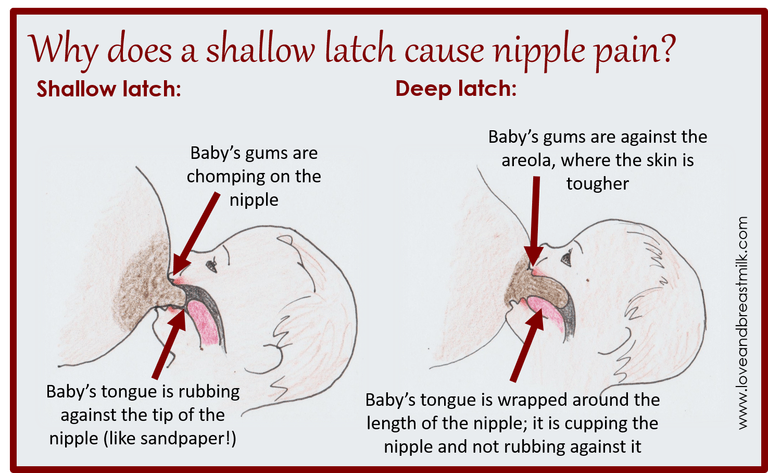 Geburtschilde Frauenheilkd. 73, 1202–1208 (2013).
Geburtschilde Frauenheilkd. 73, 1202–1208 (2013).
American Academy of Pediatrics and The American College of Obstetricians and Gynecologists. Breastfeeding handbook for physicians 2006). - American Academy of Pediatrics and American College of Obstetrics and Gynecology. "Medical Guide to Breastfeeding", 2006.
Lawrence , R . A . & Lawrence , R . M . Breastfeeding : a guide for the medical profession ( Elsevier Mosby , Maryland Heights , MO , 2011). - Lawrence R.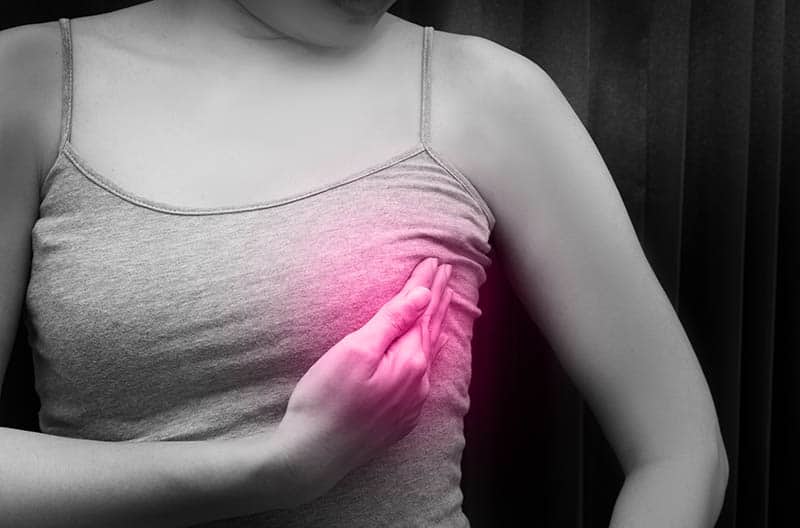 A., Lawrence R.M., "Breastfeeding: A guide for healthcare professionals." (Publishing house Maryland Heights , Missouri, USA: Elsevier Mosby; 2011.)
A., Lawrence R.M., "Breastfeeding: A guide for healthcare professionals." (Publishing house Maryland Heights , Missouri, USA: Elsevier Mosby; 2011.)
McClellan, H.L. et al. Infants of mothers with persistent nipple pain exert strong sucking vacuums. Paediatica 97, 1205–1209 (2008). — McClellan H.L. et al., "Babies of mothers suffering from persistent nipple pain create extremely high sucking vacuums." Pediatrics 97, 1205–1209 (2008).
McClellan, H.L. et al. Breastfeeding frequency, milk volume, and duration in mother-infant dyads with persistent nipple pain. Breastfeed Med 7, 275–281 (2012). — McClellan H.L. et al., "Breastfeeding frequency, milk quantity and duration of feedings in case of persistent maternal sore nipples", Brestfeed Med (Breastfeeding Medicine) 7, 275–281 (2012).
McClellan, H.L. et al. Nipple pain during breastfeeding with or without visible trauma.